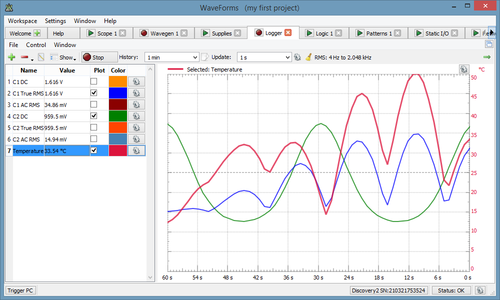Linux Mint Arduino
The Linux build of the Arduino Software (IDE) is now a package that doesn't require any specific procedure for the various distributions availabe of Linux. The only relevant information is the 32 or 64 bit version of the OS. Download the Arduino Software (IDE) Get the latest version from the download page. Yes, he installed it via the Linux (Mint) Software Manager which installs software accurately and effortlessly, but unfortunately as I mentioned above, manipulating the Linux repositories to update versions is apparently beyond the comprehension of the Arduino team.
PagesFavoritedFavorite8Linux

Plug in the FTDI device to a USB cable.
When you download the Arduino IDE in Linux, the download comes with the FTDI drivers bundled with the IDE. However, if you just open Arduino from the desktop, you'll notice that, if you click on 'Tools', the 'Serial Port' option is grayed out.
Linux includes the drivers necessary to use Arduino, and no additional install is needed. However, permissions might need to be configured. For current instructions on how to set up these permissions, visit this page.
An alternative method is to run Arduino as root in the terminal with the following command:
However, this method is encouraged only if you know what you are doing and should only be used as a last resort. You will also need to enter your administrative password to run as root.
Arduino should open, and this time the 'Serial Port' menu is available.
The FTDI device will show up under this menu. It should be named /dev/ttyUSB0. The number may vary depending on how many USB devices you have plugged into your computer. That's all.
Mac
Arduino is a widely-used, open-source electronics platform used to create devices that interact with their environment using sensors and actuators. It consists of a programmable hardware board and a software (Integrated Development Environment(IDE)) for writing and uploading programs to the board.
Before you can start building projects using Arduino, you need to set up the IDE to program your boards. The Arduino (IDE) is a free open-source and cross-platform desktop application that allows you to write code and upload it to the board. It runs on Linux, Windows, and Mac OS X, and Linux.
In this article, we will explain how to install the latest version of the Arduino Software (IDE) on Linux machines.
Installing Arduino IDE on Linux Systems
The Arduino Software (IDE) is a package that does not require any particular process for the various Linux distributions. The only needed requirement is the 32-bit or 64-bit version of the operating system.
Download the Arduino Software (IDE)
Go to the download page and grab the latest version (1.8.12 at the time of writing) of Arduino Software (IDE) for your supported system architecture. You can choose between the 32-bit, 64-bit, and ARM versions, as it is very crucial to select the right version for your Linux distribution.
Alternatively, you can use the following wget command to download the Arduino Software (IDE) package directly on the terminal.
Next, extract the downloaded archive file using the tar command.
Run Arduino IDE Install Script
Now move into the extracted arduino-1.8.12 directory and run the installation script with root privileges as shown.
Linux Mint Arduino Usb
Once the installation is done, a desktop icon will be created on your desktop, to launch the IDE, double click on it.
Linux Mint 17 Install Arduino Ide
It might happen that, you will get an error “Error opening serial port” while uploading a sketch after you have selected your board and the serial port. To fix this error, run the following command (replace tecmint with your username).
Linux Mint Arduino Permission Denied
Besides, if you have a good internet connection, you can use the Arduino Web Editor (which has an up-to-date version of the IDE). The advantage with it is that it allows you to save your sketches in the cloud, and have them backed up, making them accessible from any device.
Linux Mint Install Latest Arduino
That’s it for now! For more information and advanced usage instructions, see the Arduino documentation. To reach us, use the feedback form below.
